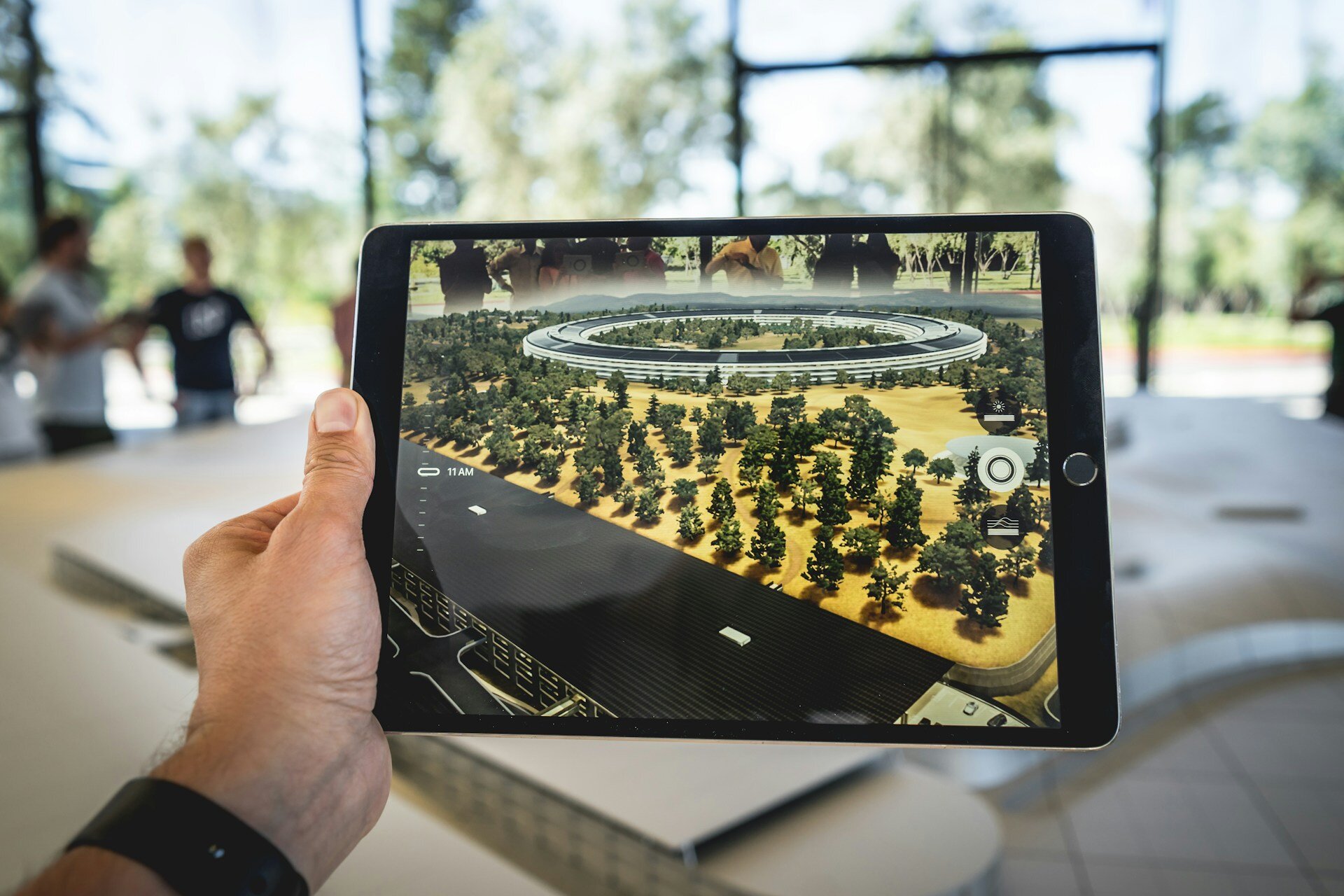What Is an AR App – And Why Should Your Business Care Now?

Augmented reality (AR) is no longer just a playground for tech giants. Today, businesses of all sizes – including those in retail, education, construction, and marketing – are harnessing AR technology to stand out, engage customers, and enhance experiences.
In this article, we’ll dive into:
-
What augmented reality actually is
-
What XR means (and how it relates to AR)
-
Use cases for AR apps in business
-
What is WebAR and why it matters
-
Real-world AR examples from IKEA, Pepsi Max, and Bauhaus
-
Why now is the right time to bring AR into your business strateg
What Is Augmented Reality (AR)?
Augmented reality (AR) is a technology that overlays digital elements – like images, 3D models, animations, or text – onto the real world in real time. Typically, users view these experiences through a smartphone or AR glasses.
Unlike virtual reality (VR), which immerses users in an entirely separate environment, AR enhances the world around them. That makes it perfect for business use cases like product previews, interactive instructions, and immersive marketing.
Businesses can use AR to:
-
Visually explain complex products
-
Allow customers to try before they buy
-
Train employees more effectively
-
Create memorable, shareable campaigns
What Is XR – and How Is It Different from AR?
Extended Reality (XR) is an umbrella term that includes:
-
AR (Augmented Reality): Digital content layered over the real world (e.g., WebAR product previews)
-
VR (Virtual Reality): Immersive digital environments that replace the real world
-
MR (Mixed Reality): Combines physical and digital environments in real time, often with advanced interactivity (e.g., Microsoft HoloLens)
What connects these technologies is the idea of merging digital and physical realities to deliver more impactful, intuitive experiences.
📚 Learn more: What is XR? (Adobe)

What Can You Use an AR App For?
AR apps can benefit nearly every industry. Here are some key use cases:
🛒 E-commerce & Product Visualization
-
Let customers “place” items in their own environment before buying
-
Reduce returns and increase buyer confidence
🏭 Manufacturing, Construction & Maintenance
-
Provide real-time, on-site digital instructions
-
Improve accuracy and safety
📚 Training & Onboarding
-
Simplify complex processes through visual explanation
-
Enhance knowledge retention
📢 Marketing & Events
-
Create campaigns that stop people in their tracks
-
Use AR filters, WebAR activations, or branded experiences
WebAR – Augmented Reality Without an App
WebAR is a browser-based version of AR that doesn’t require users to download a separate app. Experiences are launched via a link or QR code and open directly in the smartphone browser.
Benefits of WebAR:
-
Zero installation = more users
-
Quick to deploy and update
-
Ideal for time-limited campaigns or in-store activations
-
Lower development costs
🧠 Learn more: What is WebAR? (8thWall)
3 Inspiring AR Campaigns That Show What’s Possible
🛋️ IKEA Place – Try Before You Buy
IKEA’s Place app lets customers “place” furniture in their homes using AR before making a purchase. It reduces friction, builds confidence, and significantly cuts down return rates.
🚌 Pepsi Max – "Unbelievable" Campaign
In London, Pepsi Max transformed a bus stop into an interactive AR experience. Through the glass panel, pedestrians saw UFOs, tigers, and explosions happening on the street.
The campaign went viral and was praised for creativity and engagement.
🔥 Bauhaus – “Pihasauna Belongs to Everyone”
In Finland, home improvement brand Bauhaus launched a campaign combining live events and WebAR to promote backyard saunas. The AR experience visualized the possibilities of outdoor saunas in real space – supporting a legislative change and connecting with customers emotionally.
Why an AR App Is Worth It for Your Business
Here’s why smart businesses are investing in augmented reality:
✅ Better Customer Experience – Content is interactive, visual, and memorable
✅ More Engagement – Users spend more time with your brand
✅ Easier Communication – Visual explanations work across languages and complexity levels
✅ Innovative Brand Image – AR positions you as a forward-thinking company
✅ Improved Efficiency – From onboarding to support and training
Conclusion: Now’s the Time for AR in Business
AR is no longer futuristic – it’s a practical, high-impact way to communicate, teach, sell, and inspire. Whether through a standalone AR app or WebAR campaign, your business can use this technology to create standout experiences that drive real results.
Do you want your own AR-campaign?
Let's talk more and create a cool AR-campaign for your brand.





